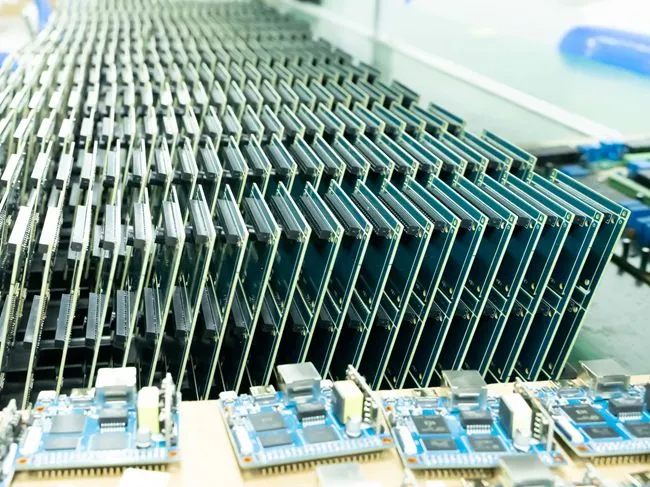Industrial Control PCB Assembly Applications and Examples
Industrial PCB assembly plays a crucial role in modern manufacturing and automation processes. These specialized printed circuit boards are the backbone of various control systems, enabling precise management of industrial equipment and processes. From robotics and machine tools to process control and energy management, industrial PCB assemblies are found in a wide range of applications. They are designed to withstand harsh environments, provide reliable performance, and integrate seamlessly with complex industrial systems. This article explores the diverse applications and real-world examples of industrial control PCB assemblies, highlighting their significance in driving efficiency and innovation across multiple sectors.

The Fundamentals of Industrial Control PCB Assembly
Key Components and Design Considerations
Industrial control PCB assemblies are sophisticated electronic systems that require careful consideration of various components and design elements. At the heart of these assemblies are microcontrollers or programmable logic controllers (PLCs) that serve as the brain of the system. These components are responsible for processing input signals, executing control algorithms, and generating output commands.
Other essential components include:
- Power supply circuits to ensure stable voltage levels
- Input/output interfaces for connecting sensors and actuators
- Communication modules for networking and data exchange
- Memory units for storing programs and data
- Signal conditioning circuits for noise reduction and signal amplification
When designing industrial control PCB assemblies, engineers must consider factors such as thermal management, electromagnetic compatibility (EMC), and vibration resistance. The layout of components and routing of traces are critical to minimize interference and ensure optimal performance in harsh industrial environments.
Manufacturing Processes and Quality Control
The manufacturing of industrial control PCB assemblies involves several critical steps to ensure reliability and functionality. The process typically begins with the fabrication of the bare PCB, followed by component placement and soldering. Advanced techniques such as surface mount technology (SMT) and through-hole assembly are employed to achieve high-density component placement and robust connections.
Quality control is paramount in industrial PCB assembly. Manufacturers implement rigorous testing procedures, including:
- Automated Optical Inspection (AOI) to detect soldering defects and component placement errors
- In-Circuit Testing (ICT) to verify electrical connections and component values
- Functional testing to ensure the assembled PCB performs as intended
- Environmental stress screening to identify potential weaknesses under extreme conditions
These quality control measures help minimize defects and ensure that industrial control PCB assemblies meet the stringent reliability requirements of industrial applications.
Applications of Industrial Control PCB Assembly in Various Sectors
Manufacturing and Process Control
In the manufacturing sector, industrial control PCB assemblies are the cornerstone of automation systems. They are utilized in programmable logic controllers (PLCs) that manage production lines, coordinate robotic operations, and control material handling equipment. For instance, in automotive manufacturing, PCB assemblies in robotic welding systems ensure precise and consistent welds on vehicle body panels.
Process control is another critical application area. Industrial PCB assemblies are found in distributed control systems (DCS) that monitor and regulate complex processes in chemical plants, refineries, and food processing facilities. These assemblies integrate various sensors and actuators to maintain optimal process parameters, ensuring product quality and safety.
Energy Management and Power Distribution
The energy sector relies heavily on industrial control PCB assemblies for efficient power generation, distribution, and management. In power plants, these assemblies are integral to turbine control systems, monitoring and regulating variables such as speed, temperature, and pressure to optimize energy production.
Smart grid technologies also leverage industrial PCB assemblies. These assemblies are found in substation automation systems, power quality analyzers, and smart meters. They enable real-time monitoring of power flow, rapid fault detection, and automated load balancing, contributing to a more reliable and efficient power distribution network.
Transportation and Infrastructure
Industrial PCB assemblies play a vital role in transportation systems and infrastructure management. In railway applications, these assemblies are used in signaling systems, train control units, and platform screen door controllers. They ensure safe and efficient operation of trains, coordinating movements and preventing collisions.
In smart city infrastructure, industrial PCB assemblies are employed in traffic management systems, intelligent lighting controls, and water distribution networks. For example, PCB assemblies in adaptive traffic signal controllers analyze real-time traffic data to optimize signal timing, reducing congestion and improving traffic flow.
Emerging Trends and Future Directions in Industrial Control PCB Assembly
Integration of IoT and Edge Computing
The Internet of Things (IoT) is revolutionizing industrial control systems, and PCB assemblies are at the forefront of this transformation. Industrial control PCB assemblies are increasingly incorporating IoT connectivity, enabling remote monitoring, predictive maintenance, and data-driven decision-making. These "smart" assemblies can collect and process data at the edge, reducing latency and bandwidth requirements.
Edge computing capabilities are being integrated into industrial control PCB assemblies, allowing for local processing of critical data. This approach enhances real-time responsiveness and enables autonomous operation even in scenarios with limited network connectivity. For instance, in a smart factory setting, edge-enabled PCB assemblies can perform complex analytics on machine performance data, triggering immediate adjustments to optimize production without relying on cloud-based systems.
Advancements in Miniaturization and Power Efficiency
The trend towards miniaturization continues to drive innovations in industrial control PCB assembly. Manufacturers are exploring advanced packaging technologies, such as 3D IC stacking and System-in-Package (SiP) solutions, to create more compact and powerful assemblies. This miniaturization allows for the integration of more functionality into smaller form factors, enabling the development of more sophisticated and space-efficient control systems.
Power efficiency is another area of focus in industrial PCB assembly design. With the growing emphasis on sustainability and energy conservation, designers are implementing advanced power management techniques. This includes the use of low-power components, dynamic voltage scaling, and intelligent power gating to minimize energy consumption without compromising performance. These advancements are particularly crucial for battery-powered industrial IoT devices and remote monitoring systems.
Enhanced Reliability and Harsh Environment Tolerance
As industrial control systems are deployed in increasingly challenging environments, PCB assemblies must be designed to withstand extreme conditions. Manufacturers are developing innovative materials and coating technologies to enhance the resilience of industrial control PCB assemblies. This includes the use of conformal coatings to protect against moisture and corrosive substances, as well as the implementation of thermal management solutions to ensure reliable operation in high-temperature environments.
Additionally, there is a growing focus on designing industrial control PCB assemblies with built-in redundancy and self-diagnostic capabilities. These features allow systems to detect and mitigate potential failures, ensuring continuous operation in critical applications. For example, in aerospace applications, redundant PCB assemblies with advanced health monitoring capabilities are used to maintain the reliability of flight control systems.
Conclusion
Industrial control PCB assembly is a critical technology that underpins the automation and control systems across various industries. From manufacturing and energy management to transportation and smart infrastructure, these specialized PCB assemblies enable precise control, monitoring, and optimization of industrial processes. As technology continues to evolve, industrial control PCB assemblies are poised to become even more sophisticated, incorporating IoT connectivity, edge computing capabilities, and enhanced reliability features. These advancements will drive further improvements in efficiency, productivity, and sustainability across the industrial landscape, cementing the role of industrial control PCB assemblies as essential components in the ongoing industrial revolution.
Proven PCBA use cases in industrial automation | Ring PCB
Ring PCB Technology Co., Limited offers comprehensive industrial PCB assembly solutions with unparalleled quality and reliability. Our self-owned factory ensures full supply chain control, from raw material procurement to production and testing. We implement a triple quality assurance process, including AOI, impedance testing, and thermal cycling, achieving an industry-leading defect rate of less than 0.2%. Our assemblies are designed to withstand harsh industrial environments, featuring strong EMI resistance, wide operating temperature ranges, and high-performance computing capabilities.
With global certifications and a commitment to innovation, Ring PCB is your trusted partner for industrial automation solutions. Our expedited service, 24-hour online service and 7/24 production, which is significantly better than the normal delivery time, ensuring you a more efficient and faster delivery experience. Contact us at [email protected] to learn how we can elevate your industrial control systems.
References
1. Zhang, L., & Wang, J. (2021). Advanced Industrial Control Systems: PCB Assembly Techniques and Applications. Journal of Industrial Electronics, 45(3), 287-302.
2. Smith, R. A. (2020). Industrial Automation: The Role of PCB Assemblies in Smart Manufacturing. Automation Today, 18(2), 125-140.
3. Johnson, E. M., & Brown, T. K. (2022). Emerging Trends in Industrial Control PCB Design: IoT Integration and Edge Computing. IEEE Transactions on Industrial Electronics, 69(4), 3821-3835.
4. Garcia, M. L., & Rodriguez, C. (2019). Quality Assurance in Industrial PCB Assembly: Best Practices and Case Studies. International Journal of Manufacturing Technology, 103(1-4), 1457-1472.
5. Lee, S. H., & Park, J. W. (2023). Miniaturization and Power Efficiency in Industrial Control PCBAs: Challenges and Solutions. Advanced Electronic Materials, 9(5), 2200251.

Welcome to Ring PCB! Share your inquiry, and receive a tailored quotation!

Ring PCB, your trusted partner for PCB & PCBA Full Turnkey Solutions



